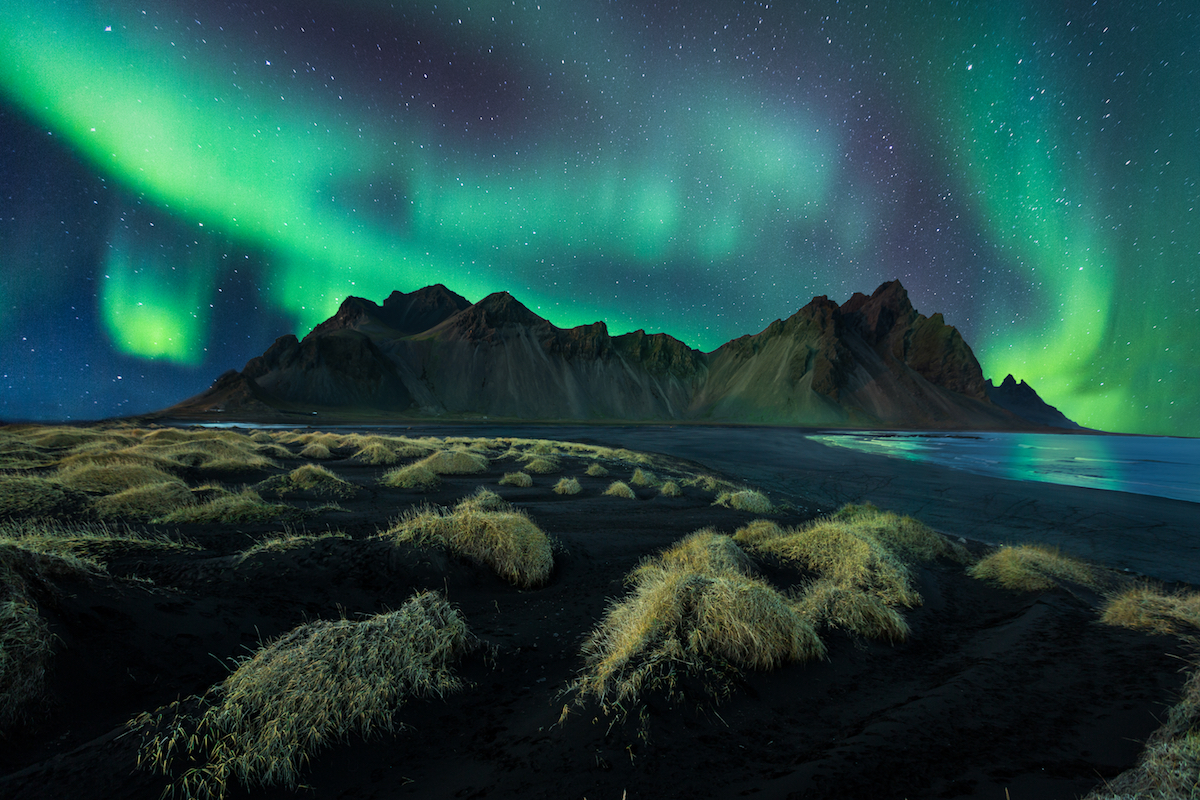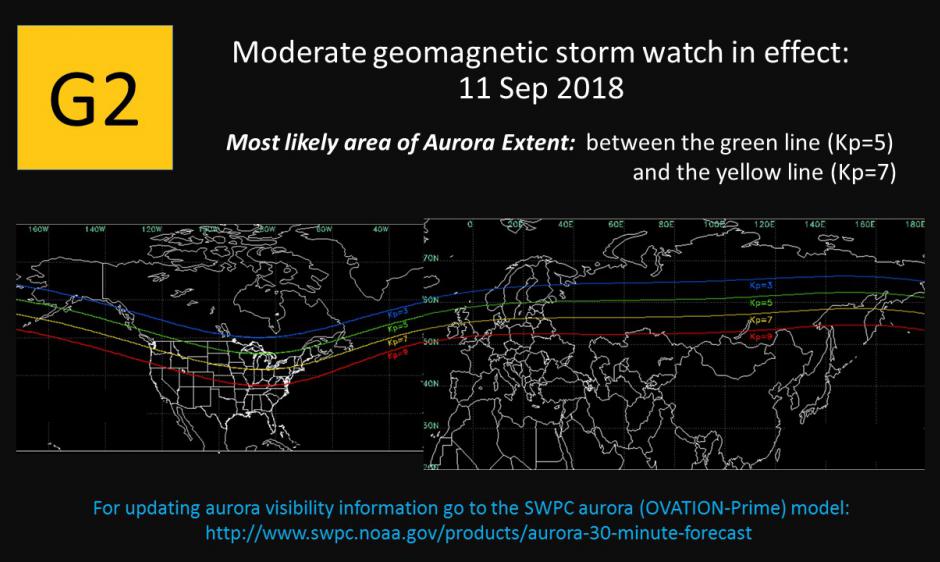A Solar Storm Is Coming Tonight — Here's Where You Might See the Aurora

A moderate geomagnetic storm will lash the planet tonight, according to a National Oceanic and Atmospheric Administration (NOAA) alert released yesterday (Sept. 10).
A stream of high-energy particles have escaped through a hole in the sun's corona and are streaming our way. While a sufficiently severe solar storm would pose a significant threat to modern infrastructure, there's no reason to worry about this event. It will, however, offer people in parts of the U.S. and Canada a chance to spot rare auroras flickering at relatively low altitudes.
The aurora borealis happens, as Live Science has previously reported, when charged particles from the sun slam into the particles of a region of Earth's upper atmosphere called the ionosphere. Particles floating between 60 and 600 miles (96 to 960 kilometers) above the planet's surface absorb energy from those charged particles, and re-emit that energy in the form of colored light. From Earth, the effect looks like towering waves of light dancing across the sky. [Northern Lights: 8 Dazzling Facts About Auroras]
A NOAA map, pictured below, highlights the areas where auroras are most likely to appear during this storm. The region betwen the green line (marked kp=5) and the yellow line (marked hp=7) has the highest chance of aurora activity.

In the U.S., that includes Washington state, northern Idaho, Montana, northeastern Wyoming, parts of southern North Dakota, South Dakota, part of northeast Nebraska, southern Minnesota, northern Iowa, much of Wisconsin, northern Illinois (including Chicago), Michigan's lower peninsula, upstate New York, Vermont, New Hampshire and Maine. Tiny slivers of northern Ohio and Pennsylvania, as well as far-northeastern Oregon, also fall within that aurora zone.
Most of Canada's most populous regions also fall within the possible aurora zone, including southern British Columbia and an area of southern Ontario and Quebec that includes Ottawa, Toronto and Montreal.
On the Eurasian continent, the northern British Isles, parts of Scandinavia and central Russia all fall within the most likely aurora zone.
Sign up for the Live Science daily newsletter now
Get the world’s most fascinating discoveries delivered straight to your inbox.
Originally published on Live Science.










